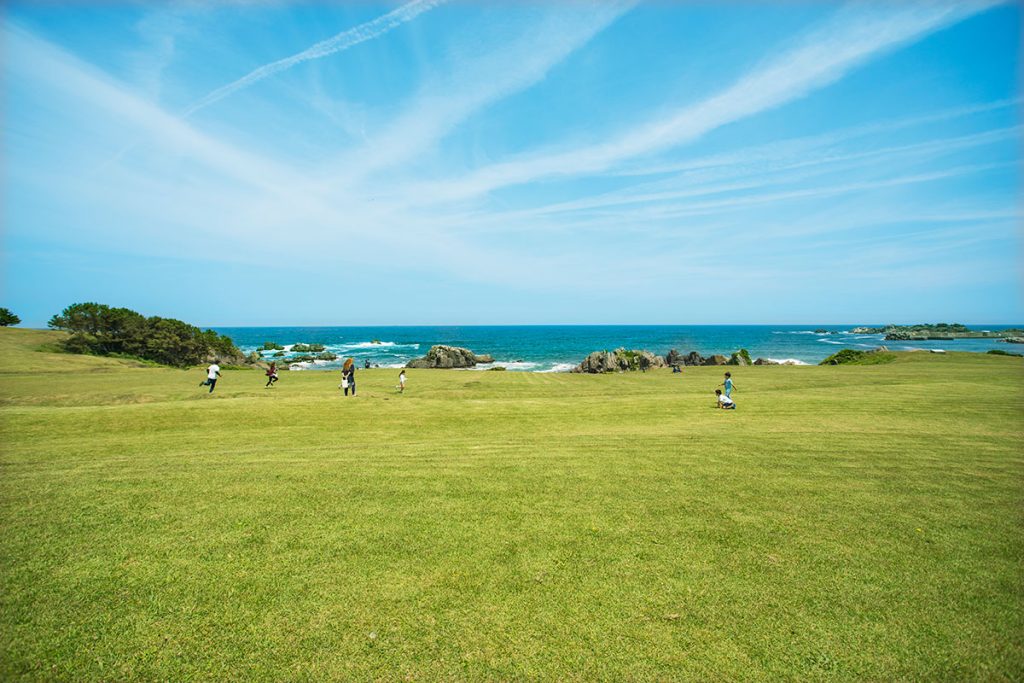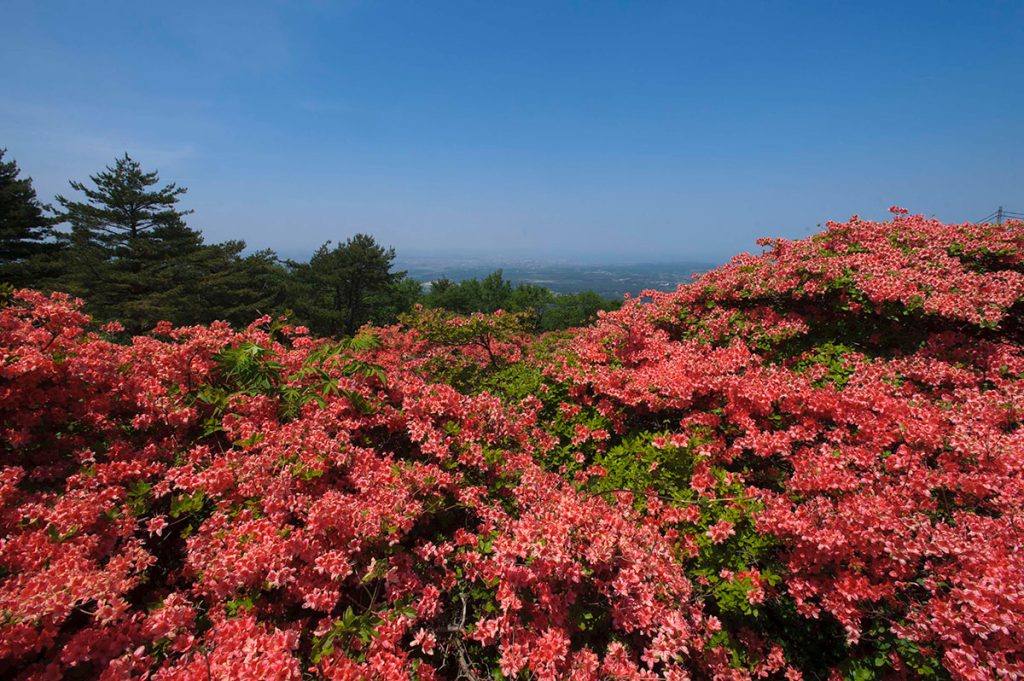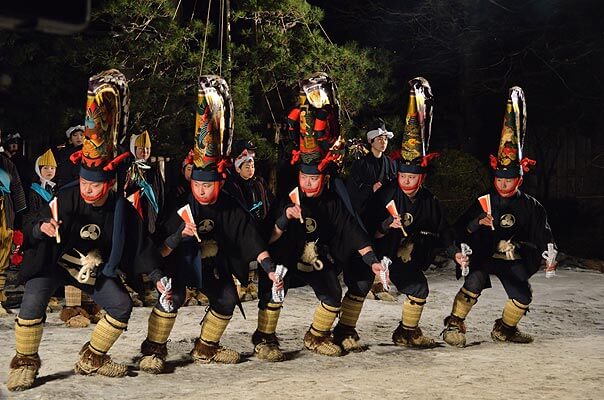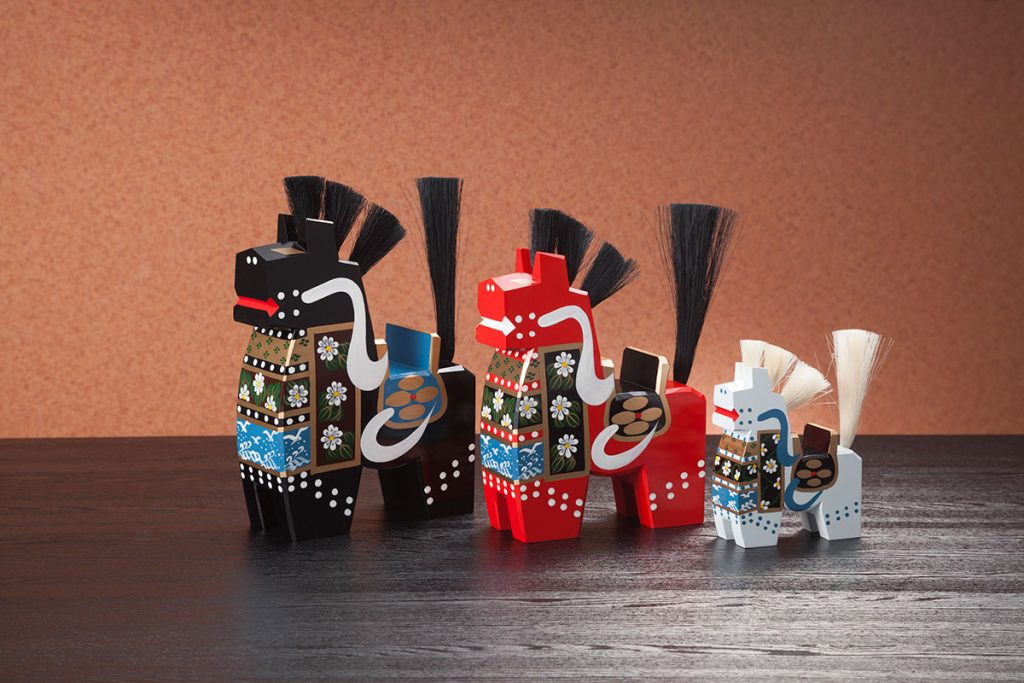Horses have supported people’s lives as a military force during the days of the samurai, as a means of transportation, and as a source of power for agricultural work. The Kabushima Island, Tanesashi Coast, and Hashikami areas, which belong to the Nanbu region where renowned horses were bred, retain many landscapes and cultures that were fostered by living with horses. We will introduce you to this area under the inseparable theme of “horses”.
“Tanesashi Natural Lawn” is a pasture for horses

The “Tanesashi Natural Lawn” that stretches to the edge of the sea is part of “Myonomaki” used to raise horses. Grazing continued until about 1965 when horses trampled on and grazed to maintain the lawn. Such activities and the distinctive environment, with its Yamase wind, sea fog, and light snowfall in winter, have created a unique ecosystem that fosters more than 650 species of coastal and alpine plants.
In the past, the pasture extended to the base of “Mt. Hashikami”

“Mt. Hashikami” is also known as “Gagyu-zan”, as it looks like a cow lying down. In the past, the pasture extended to the base of this mountain. Cattle and horses grazed around “Obirakitai”, the eighth station on Mt. Hashikami. A colony of approximately 20,000 azaleas grows wild here, and it is said that the azaleas that the cattle did not eat, remained.
Horses are the reason for “He” in the name!?
Ichino-He, Nino-He, Sanno-He….Hachino-He, Kuno-He.
Place names with “He” remain in northern Iwate and Nanbu southern Aomori Prefectures. There are various theories as to why this is. This region has long been a horse-breeding area, and one theory is that the Japanese character “He”, (also read as “door”) was named for the location where the “Kido” (wooden door) of a government horse ranch was located. It is also said that horses were paid as an annual tribute to the shogunate during the Edo period.
Eboshi hat of the Enburi is a horse’s head

“Enburi” is held in Hachinohe City, Hashikami Town, and other cities and towns in the Nanbu region from early to mid-February. This 800-year-old folk performing arts is to pray for a bountiful harvest. Among the dancers, a “Dayu” with a black haori coat, wears straw shoes and holds a farming tool called “Eburi”, while shaking his head, gestures to level the soil in the rice paddies. The Eboshi hat worn by the Dayu imitates a horse’s head decorated with a mane. A series of rice cultivation from sowing to harvesting is expressed in the dance. “Oniwa (garden) Enburi” is popular with visitors to appreciate the Enburi while enjoying Hachinohe senbei-jiru soup and amazake at the nationally registered tangible cultural property, “Kojokaku” in the annual “Hachinohe Enburi” winter festival held from February 17 to 20.
▶︎Click here for the schedule of Enburi events
“Yawata-uma” horse, a traditional folk craft that has been handed down the generations

A typical local folk craft from the Nanbu region is also in the shape of a horse. Although it is not clear when they were first made, it is said that “carved wooden horse crafts” were sold as souvenirs at the annual festival of “Kushihiki Hachiman-gu Shrine”, the largest shrine in the Nanbu region. During the annual festival, samurai warriors compete in Yabusame (horseback archery) skills, and the name “Yawata-uma” is believed to have come from “Hachiman” (written in the same Japanese characters), the name of the location of Kushihiki Hachiman-gu Shrine. Later, Yawata-uma horses were made as a supplementary business during the agricultural off-season, and the gorgeous patterns represent the grand equestrian attire worn during wedding ceremonies in rural villages in the past. As a horse that brings good fortune, it is also popular as a celebratory gift for weddings, housewarmings, and other celebrations and as a souvenir. Hands-on painting experience is also available in the city.
